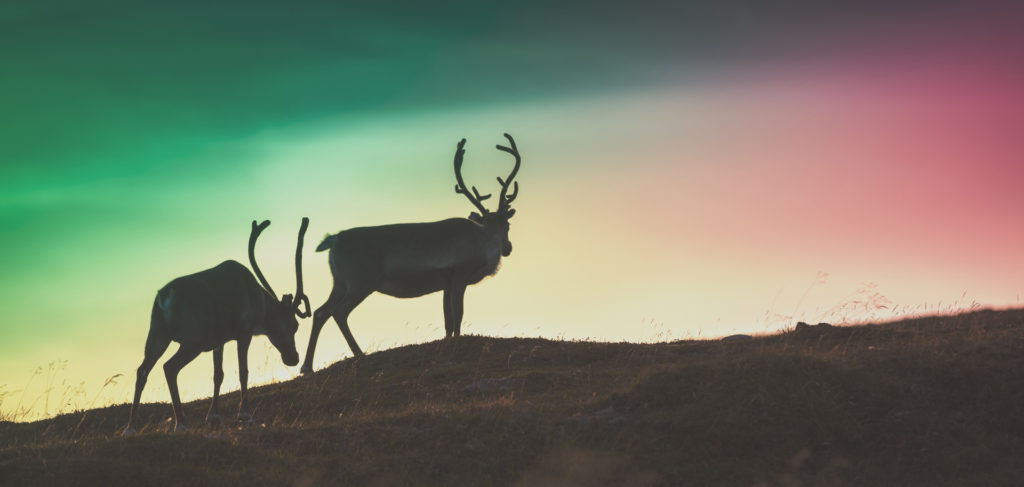What Do Reindeers Eat in Lapland?
Introduction to the Reindeer Diet in Lapland
Reindeers, or caribou as they are known in North America, are an integral part of Lapland’s culture and ecosystem. These majestic creatures have adapted to the harsh Arctic environment, and their diet plays a crucial role in their survival. Understanding what reindeers eat in Lapland not only provides insight into their biology but also offers a glimpse into the traditional practices of reindeer herding that have been passed down through generations.
At VALO Finland, we aim to provide our guests with an immersive experience of Lapland’s unique wildlife and traditions. By exploring the dietary habits of reindeers, we hope to enrich your understanding and appreciation of these remarkable animals during your stay with us.
Seasonal Variations in Reindeer Diet
Reindeers’ diets vary significantly with the changing seasons, reflecting the availability of different food sources throughout the year. During the summer months, when the Arctic landscape is lush and green, reindeers primarily feed on a variety of vegetation. This includes grasses, herbs, leaves, and shrubs. The abundance of food during this period allows reindeers to build up their fat reserves, which are essential for surviving the harsh winter months.
As autumn approaches, reindeers shift their diet to include more fungi, particularly mushrooms, which are plentiful during this season. This dietary change helps them prepare for the winter by providing additional nutrients and energy. During the winter, when the ground is covered in snow and vegetation is scarce, reindeers rely heavily on lichens, a type of symbiotic organism that grows on rocks and trees. Lichens are rich in carbohydrates and provide the necessary sustenance to keep reindeers going through the cold months.
Spring brings another shift in the reindeer diet as the snow melts and new vegetation begins to sprout. Reindeers take advantage of the fresh growth, feeding on young shoots and leaves to replenish their energy after the long winter. This cyclical pattern of dietary changes ensures that reindeers can thrive in the challenging Arctic environment.
Natural Food Sources for Reindeer
Reindeers are highly adaptable foragers, capable of finding food in the most challenging conditions. In the summer, they graze on a wide variety of plants, including:
- Grasses and sedges
- Herbs and wildflowers
- Leaves from shrubs and trees
- Mosses and lichens
During the autumn, mushrooms become a significant part of their diet. Reindeers have a keen sense of smell that helps them locate these fungi, which are rich in nutrients and help them prepare for the winter.
In the winter, when the ground is frozen and covered in snow, reindeers rely on lichens, particularly reindeer lichen (Cladonia rangiferina). They use their hooves to dig through the snow to reach these lichens, which are a crucial source of carbohydrates. Additionally, reindeers may also feed on the bark and twigs of trees, as well as any remaining vegetation they can find.
Human Impact on Reindeer Feeding Habits
Human activities have had a significant impact on reindeer feeding habits in Lapland. Traditional reindeer herding practices, which have been carried out by the Sami people for centuries, involve managing reindeer herds and ensuring they have access to adequate food sources throughout the year. This often includes guiding the herds to different grazing areas depending on the season and providing supplementary feed during harsh winters.
However, modern developments and climate change have introduced new challenges. Infrastructure projects, such as roads and railways, can disrupt traditional migration routes and limit access to grazing areas. Additionally, warmer temperatures and changing precipitation patterns can affect the availability of natural food sources, making it more difficult for reindeers to find the sustenance they need.
Despite these challenges, efforts are being made to mitigate the impact of human activities on reindeer populations. Conservation initiatives and sustainable herding practices aim to preserve the delicate balance between reindeers and their environment, ensuring that these iconic animals continue to thrive in Lapland for generations to come.
Conclusion
Understanding what reindeers eat in Lapland provides valuable insight into their adaptation to the Arctic environment and the traditional practices of reindeer herding. By exploring the seasonal variations in their diet and the natural food sources they rely on, we can appreciate the resilience and resourcefulness of these remarkable animals.
At VALO Finland, we are committed to offering our guests an authentic and enriching experience of Lapland’s unique wildlife and cultural heritage. Whether you are staying in our luxurious Ice Cube Villas or exploring the stunning landscapes of Saariselkä, we invite you to discover the magic of Lapland and the fascinating world of reindeers. With our expert guides and comprehensive services, your journey into the heart of Lapland will be both memorable and enlightening.
